Brazilian Blue Initiative
Expanding Brazil's coastal protections
85% of Brazil's mangroves are protected, and the Brazilian Blue Initiative is poised protect even more.
The Brazilian Blue Initiative, announced in March 2018, aims to promote the conservation of the country’s coastal ecosystems under climate change and human pressure through effectively managing and expanding marine protected areas, according to The Chico Mendes Institute for Biodiversity Conservation (ICMBio). It is a strategic framework for a vision of sustainable development and conservation of marine and coastal zones. For Brazil’s vast mangrove ecosystems, this means enhanced safeguards within the context of larger mosaics of protected areas.
The Initiative will support the following Brazilian and international goals:
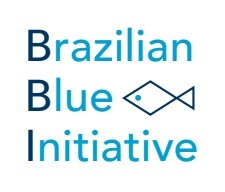
Through this Blue Initiative, Brazilian social actors have an excellent basis to support engagement on this strategy, placing the country among those leading to advance ocean protection and sustainability. This Initiative supports the country’s transition to a more sustainable society and marine-based economy, including ecological and cultural elements, providing social and economic benefits for current and future generations. It means to restore, protect and maintain the diversity, productivity, resilience, core functions and intrinsic value of coastal and marine ecosystems.
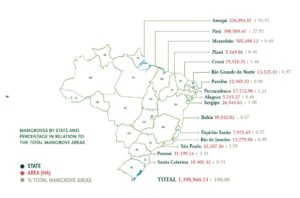
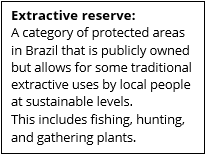 Brazil boasts the second largest national mangrove cover, and 71% of these mangroves are currently protected (see the figure below). However, since the beginning of the 20th century, the Brazilian mangrove loss is estimated at 25%. The situation is more serious in the northeast and southeast regions, where the ecosystem is more fragmented. According to a recent estimation, these regions have lost around 40% of what was once mangrove continuous area.
Brazil boasts the second largest national mangrove cover, and 71% of these mangroves are currently protected (see the figure below). However, since the beginning of the 20th century, the Brazilian mangrove loss is estimated at 25%. The situation is more serious in the northeast and southeast regions, where the ecosystem is more fragmented. According to a recent estimation, these regions have lost around 40% of what was once mangrove continuous area.
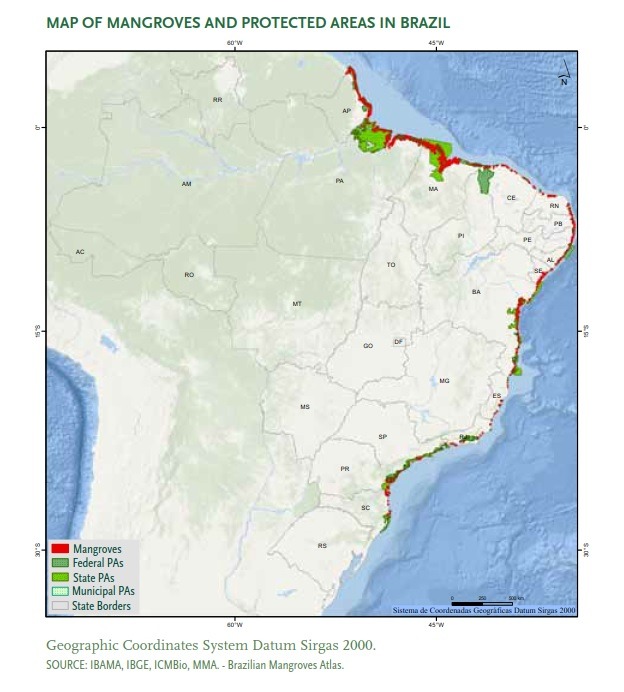
The Brazilian Blue Initiative will expand current protections to additional key mangrove areas in the Northern states of Maranhão and Pará in the form of extractive reserves. An extractive reserve is an area of land owned by the Brazilian government that allows for natural resource extraction by local groups or communities. Combined, the new extractive reserves of Arapiranga-Tromai, Rio Itapetininga, and Baía do Tubarão encompass over 400,000 ha of coastal and nearshore habitat, including extensive mangrove cover in a recognized Ramsar wetland site. The Brazilian government is considering additional extractive reserves in the region, which could bring vital defense to an additional 300,000 ha of coastal habitat.
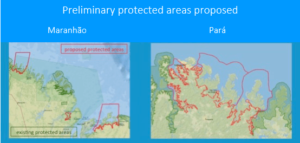
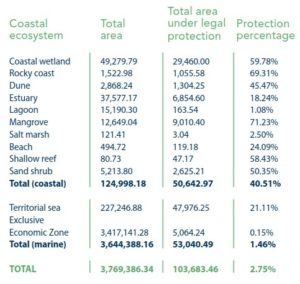
Coastal and marine ecosystems are extremely important to the coastal traditional peoples and local communities, not only because they provide livelihoods, but also because they protect them from climate change. An average sea level increase between 26cm and 86cm along the Brazilian coast is estimated up to 2100. These newly protected areas will be under co-management with local communities as part of the Initiative’s ambition to enhance the sustainable livelihoods and promote the well-being of local communities, which includes over 13,000 traditional fishing families. The strategy also includes the restoration of mangroves in abandoned shrimp aquaculture ponds.
The Initiative will follow the following thematic phases and components of action proposed for all associated projects:
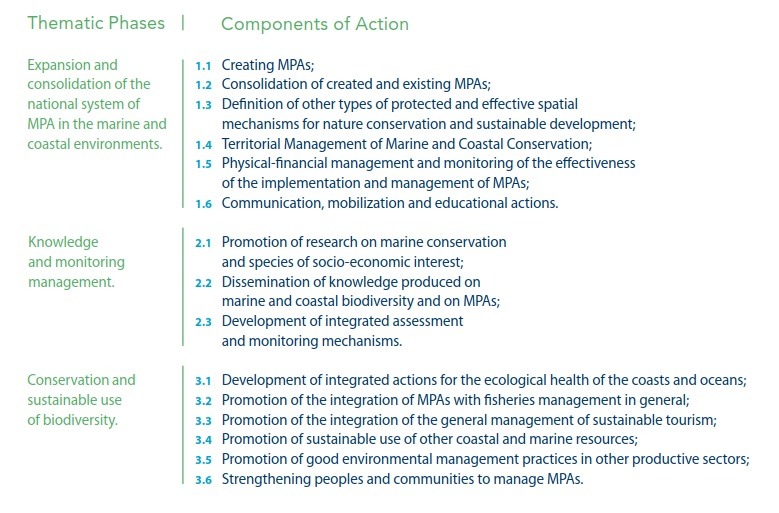
To develop the Brazilian Coastal-Marine Strategy as part of the Brazilian Blue Initiative, two projects have been playing an important role in Brazilian conservation: the Brazilian Mangroves Project and the Brazilian Coastal and Marine Protected Areas Project, both run by the government and financed by GEF.
Completed in December 2017, the objectives of the mangrove project were:
This project has fed into the development of the strategy for the Brazilian Blue Initiative; Brazil is in a strategic position to innovate the generation and integration of knowledge from diverse sources to develop an ecosystem basis for decision making; hence a major focus of the Initiative is on ecosystem-based adaptation and the decrease of coastal traditional peoples’ and local communities’ vulnerability.
Partners of the Brazilian Blue Initiative include:
For more information on the Initiative, please see the following resources in our resources library: